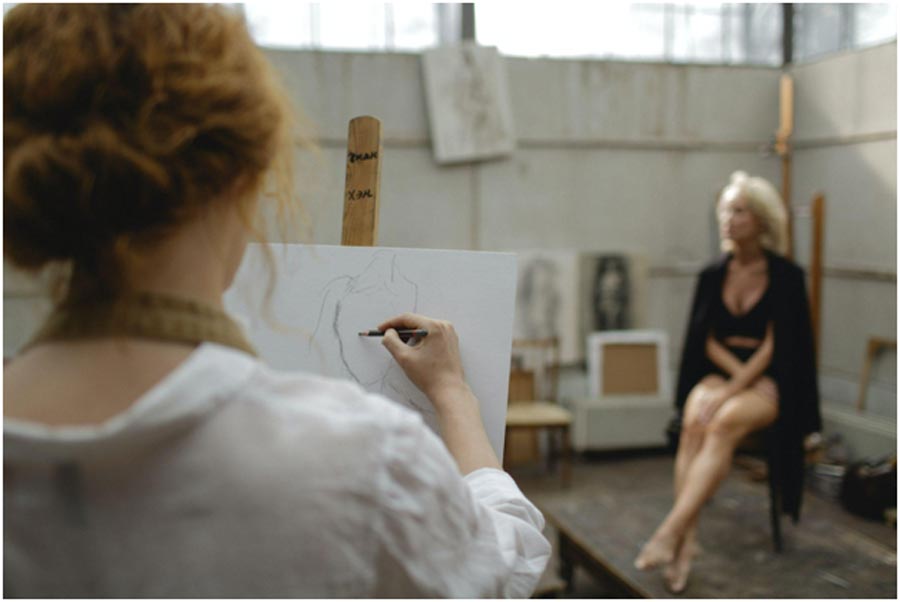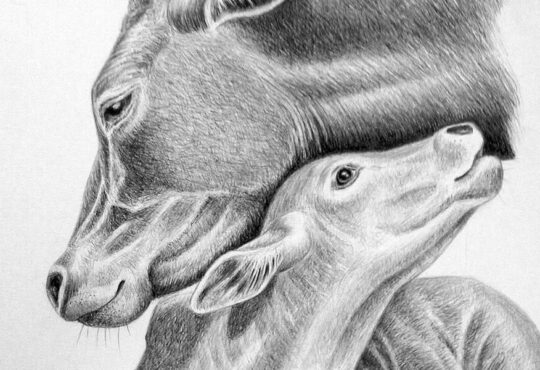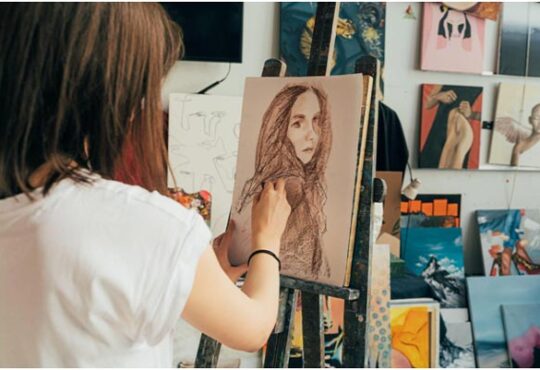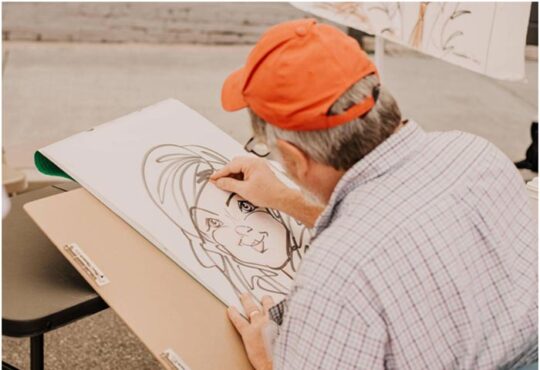Realistic Portrait Drawing Tips for Beginners to Improve Their Skills
Planning to draw realistic portraits? Learning how to make portraits takes a significant amount of time. Making it realistic needs even more practice and precision. But, portrait drawing does not necessarily take years to learn.
When you use some good tips for drawing portraits, you can make it much easier to draw people’s faces and become an expert sooner than you think.
Mastering the art of realistic portraits can become less time-consuming and more manageable with these realistic portrait drawing tips for beginners to improve their skills. So, get your tools ready, and use the tips below to draw realistic portraits.

Think About Your Face Parts Independently
To draw a realistic portrait, it is essential to first examine each individual facial feature. This is one of the most used drawing ideas for beginners. It’s not easy to capture a human face in pencil.
There are a lot of details involved in representing the head, eyes, and nose, as well as the range of facial expressions. Careful examination of each face feature individually can help capture its true proportions and shape while drawing a portrait.
Try learning the quirks associated with each facial feature. When drawing a nose, for instance, think of the structure of a nose. Then make notes about its unique features.
Find out what geometric forms must be included when designing a nose. Eyes, lips, cheeks, ears, teeth, hair, etc., all follow the same pattern when sketched. After learning the fundamentals of realistic drawing, you may begin to create your own convincing portraits.
What you’ve learned is that learning the fundamentals of facial proportions requires you to study every facial feature individually, which will help you create more lifelike human portraits or improve your artistic abilities.
Separate the Face into Basic Geometric Forms
A good portrait drawing tip is to divide the subject into geometric shapes. But before you do that, you must select the right medium for your portrait.
The quality of the drawing instrument is the most important factor in creating a successful drawing, regardless of your level of artistic experience. A B pencil or any other light pencil will do for portraiture.
You might be wondering about the possible role that geometric shapes play in the portrait-painting process now that you know you’re supposed to be drawing a human.
Remember that the human body and face are built from basic geometric forms. If you want to draw people, you can simplify them first by reducing them to an oval, rectangular, circular, or triangle.
Follow a Progression From General to Specific
That’s the advice our team’s artists gave us over and over again. The first step in creating any portrait is to use basic forms. Even if the eyes are your favorite feature, begin your pictures with a particularly detailed eye.
The more time you spend on a project, the more intricate you can make it. Akin to shaping clay into a likeness of one’s face, as one of Sparketh’s art teachers put it. In sculpture, the first step is to nail down the fundamental planes and shapes before adding detail and polish.
Maintain an Appropriate Perspective
Having the correct perspective is crucial while drawing a portrait. Portrait drawing relies heavily on the use of perspective. You can see the entire picture of your artwork of human drawing with the help of a perspective.
Most people believe that learning to draw with perspectives is a difficult process. But in reality, the full portrait will become easy to create after you master perspective drawing.
The key to creating a convincing portrait is the correct perspective when depicting a human face. Drawing a realistic face from an accurate perspective requires an understanding of the interplay between its many characteristics.
Attempt in Monochrome
While it’s true that many of us prefer to work in color, reverting to black and white may be a great method to refine one’s talents, particularly attempting portraiture. Why? Drawing using charcoal or graphene helps you develop an eye for light and shade, an essential skill for creating convincing portraits.
Create Depth by Shading With a Range of Pencil Tones
If you want to draw realistic shadows, you need to use both bright and dark pencils. The key to a successful pencil portrait is establishing shadows.
In art class, students often take a pointed pencil to sketch a face and then rub the paper over the pencil markings until they disappear or the paper turns grey to simulate the appearance of shadows.
While this may seem obvious, it’s one of the greatest errors artists make while attempting to draw a portrait in pencil. That’s why blending bright and dark pencils is such good practice. It’s best to use darker pencils to portray areas that are in darkness, while a hard pencil is useful for generating lighter parts of the human face or making them look bright.
Sketch Lines to Determine the Lengths
Lines are drawn in order to determine distances. Measure distances between the various parts of the face. Include the eyes, the nose, the mouth, and the ears. This is a crucial stage in giving your character a unique appearance.
Draw lines to determine the distance between every facial feature and analyze the proportions and relationships between them to hone your artistic talents.
Observe Others to Paint Realistic Portraits
One of the finest methods to find inspiration is to see other creators at work. Discovering new approaches and methods that you would like to experiment with is another great benefit of this activity.
Improve your portraiture by studying the works of painters who use techniques both familiar and foreign to your own. Learning about your own personal style can be aided by exposing yourself to the works of a wide range of artists.
Even better, you may observe a time-lapsed work and then attempt to duplicate it in real-time (while adding your own twist, of course).
Practice Making Portraits of Various Subjects
The best way to improve your creativity is to put it into practice. The greatest approach to improving at drawing portraits is to practice drawing them every day. Here are some techniques to motivate yourself on a daily basis to work on your portraiture abilities.
- If you want to improve your drawing skills, try drawing from life. It’s like something entirely new.
- Learn to use photographs as references. Our YouTuber, Maria, has some advice for you.
- Try not to settle into a rut. Get some experience drawing people of many sexes, ages, and ethnicities.
Conclusion
The whole concept of drawing a realistic portrait may seem intimidating at first. Following these realistic portrait drawing tips for beginners to improve their skills, you can learn to draw amazing portraits too.
Do give the above methods a try. After just a few tries, you will see that each sketch you make is getting better and better.







